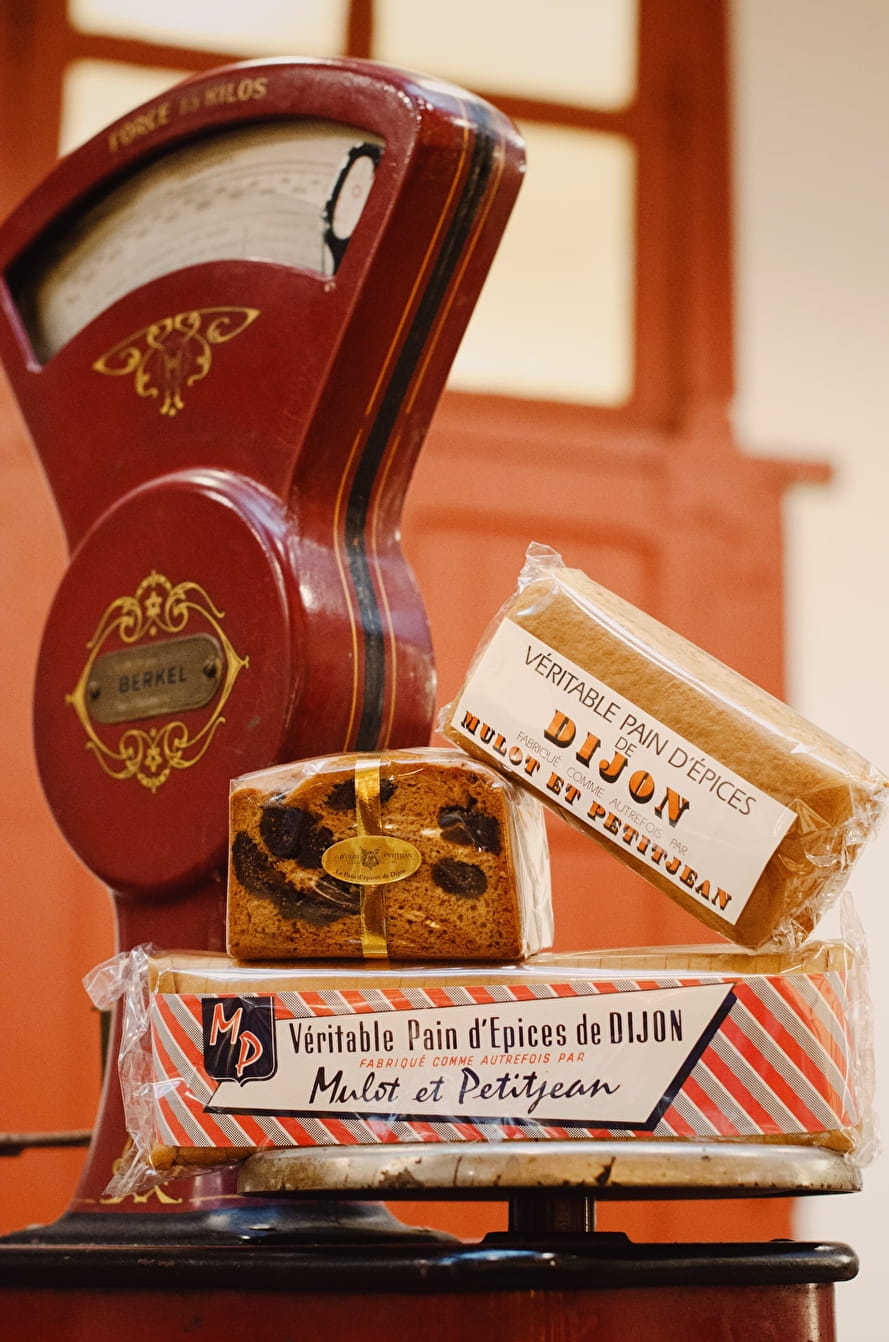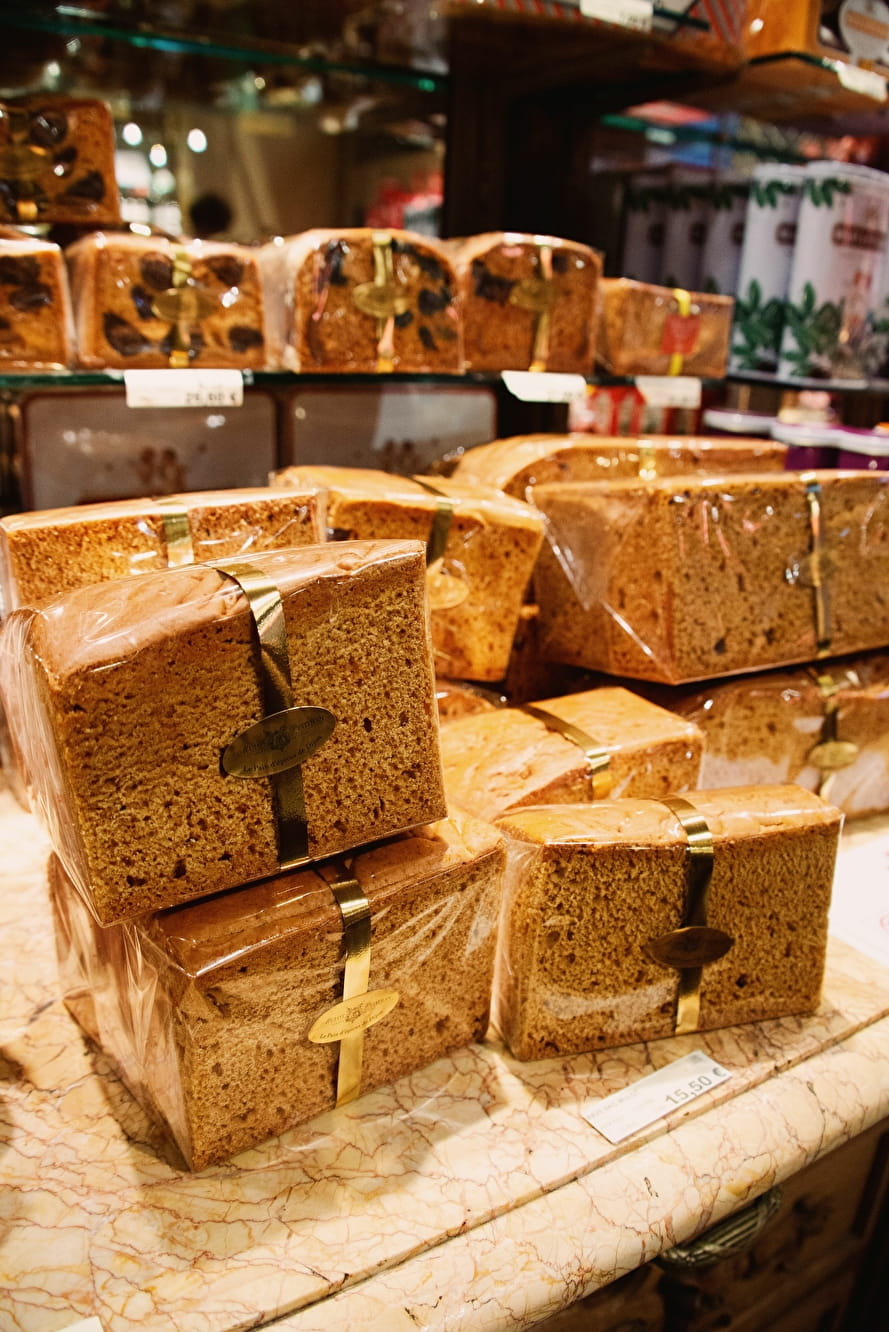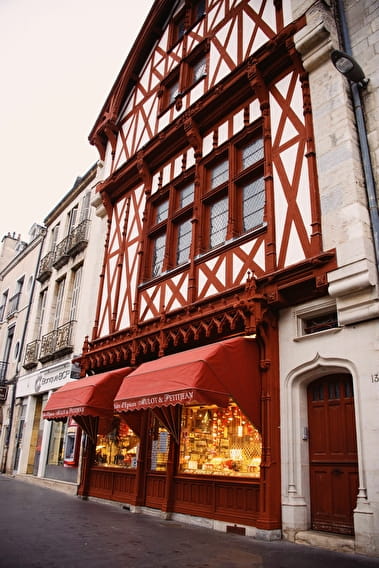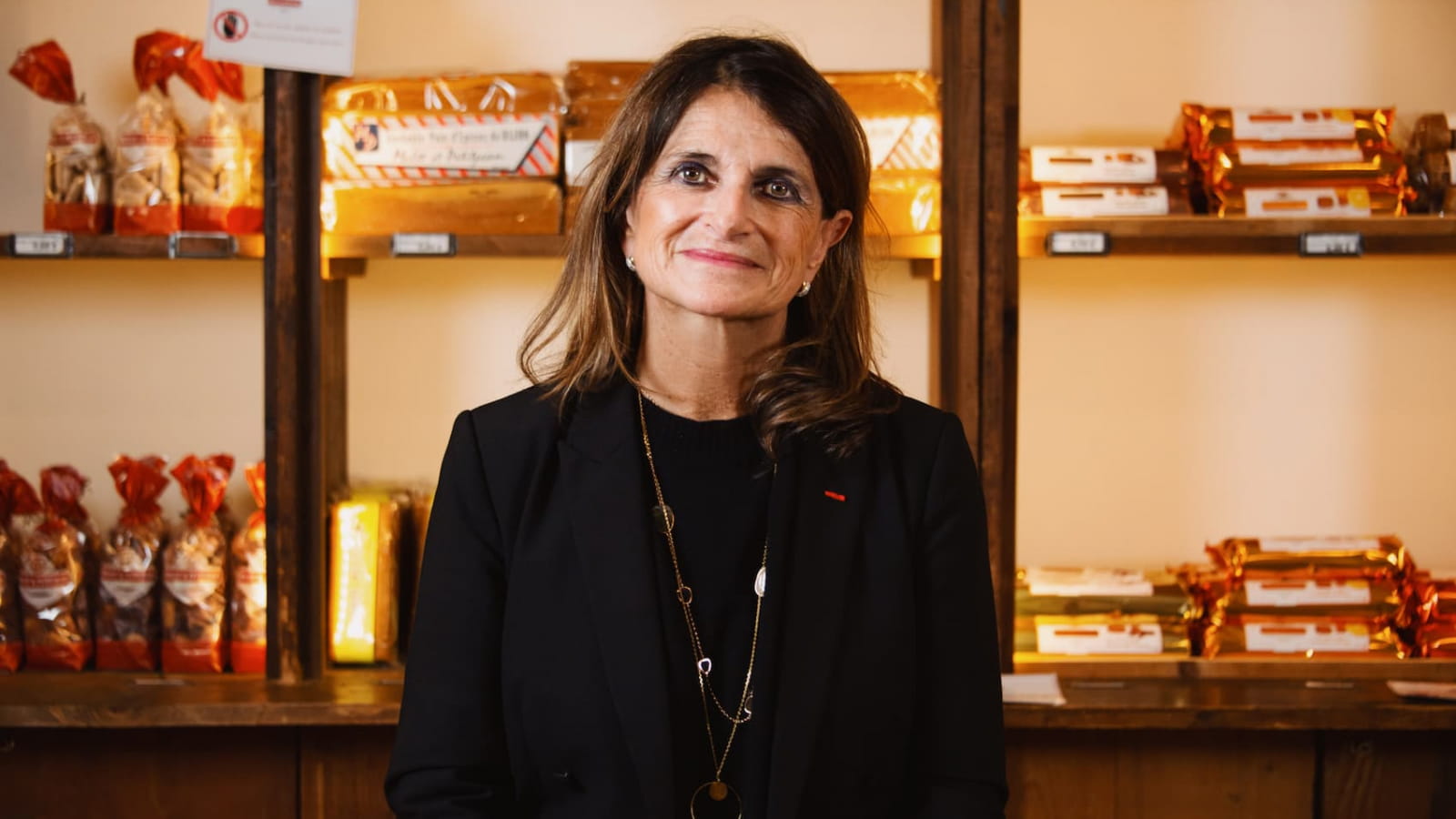
Catherine Mulot-Petitjean, CEO of Maison Mulot & Petitjean
Let's go and meet Catherine, heir of the Maison Mulot & Petitjean empire, that has been making pain d’épices (spice bread) and other delicious iconic products for generations...
She reveals all her secrets to make sure you don't miss out on anything in Burgundy in autumn.
A peek into the past
I manage the Mulot & Petitjean company in Dijon, a company that has been making pain d’épices (spice bread) since 1796. The name Mulot & Petitjean dates back to 1901, when Auguste Petitjean married a certain Miss Mulot. From then on, the two pain d’épices factories were merged into one. This marriage was the beginning of a family, and also the company as we know it today.
It's important to have specialist know-how, but it is even more important to know how to pass it on…
A legacy passed down through the generations
Carrying on this family tradition isn't always as easy as you think, because to be able to take over your parents, you need to be able to find your place. I was particularly lucky because I took to my role in this business like a duck to water. I was really passionate about the reorganisation, evolution and innovation within our company, I have always loved my job!
Award-winning know-how
We have recently noticed that consumers want to feel attached to their values and use products they know, and so local products. Our company has been awarded the “Living Heritage Company” label. This is a French accreditation awarded by the Ministry of the Economy to showcase expertise, the art of passing on this know-how and the ability to innovate. I always compare the company to a bicycle: if we stop pedalling, we will eventually fall!
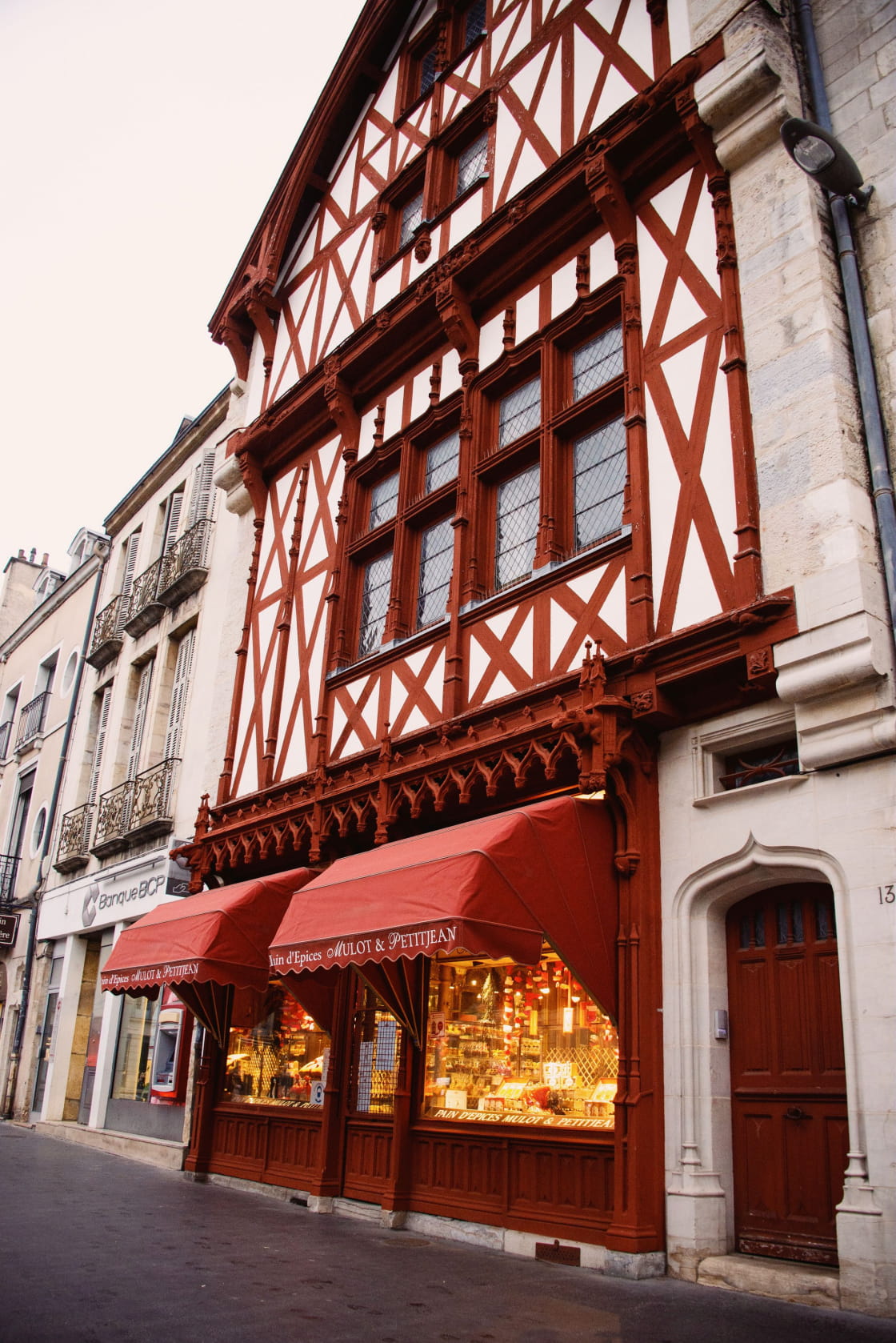
The secrets of pain d’épices (spice bread)
For Mulot & Petitjean, safeguarding tradition is our absolute top priority because our customers are loyal to their favourite products. For example, for some people, the 'nonnette' is a product that whisks them back to their childhood. A speciality product should always be outstanding.

Behind the scenes at the factory
On our premises, you'll find our manufacturing workshops, and also a museum because we wanted to be able to tell visitors all about the history of our company and of pain d’épices in France, as well as the story of how this product arrived in Burgundy in the first place.
The front of our building is particularly beautiful with the half-timbering... And inside, you'll see the traditional ceilings. The first part of the shop is still in its original condition!
Visit the factory and the museum
Making pain d’épices
The basic ingredients for making pain d’épices (spice bread) are flour, honey, sugar, egg yolks, spices and raising agents. The choice of ingredients and their origin are essential when making this product. In making pain d’épices, you have to follow a code of practice, and certain steps must be respected in order to produce this product. It's good to know that pain d’épices is a product that keeps very well, as long as there are no extra ingredients. It can be kept for 4 years, sometimes longer!
We begin by making an initial dough, which is left to rise for a fortnight. Proteins are formed in the dough during this time, and this is what helps the pain d’épices rise. The second step is known as 'braquage', and this is when other ingredients such as candied fruit or almonds can be added. Making pain d'épices is still a manual process, it is formed by hand and cut using traditional methods.
What is really great here is that visitors can smell the products from the shop!
Find out more about the shop in Dijon
Inimitable products
As well as pain d’épices in all shapes and sizes, we also produce other products such as nonnettes, mini-nonnettes, jimbettes, and a speciality of Dijon called the jacqueline, which we managed to take over from a pastry chef from Dijon called Antonin Michelin. We also make biscuits and sweets that are sold mainly in our town centre shops.
Our products are sold all over France. In our shops in Dijon and in Beaune, and with our stockists, delicatessens. They can also be found in some motorway services in Burgundy. We have a wide range of stockists and customers and we are eternally grateful to them for promoting our unique product.
Find out more about the shop in Beaune
Catherine will guide you
In autumn, there is an easy-going atmosphere here. It's the season for great walks, and for exploring the magnificent places in our region…

When autumn comes...
Autumn comes quite early on in the year to Burgundy. The signs to look out for are the low-lying light, the colours and the scents, especially in the woodland.
It is a much-awaited season because it is time for the grape harvest! Even if we don't actually participate, we look forward to tasting the wines each year. This is a festive season and the whole region really comes alive.
Experiencing the wonderful world of wineAn autumn walk...
The first thing to do before going for a walk is to make sure you've got a 'nonnette' in your backpack, as a snack on your way through the forest or the vineyards! Personally, I like walking around Clos Vougeot. This year, I decided to go back to places I haven't seen for a while. I went to the Château de Commarin, and Fontenay Abbey, and I really recommend you go there in autumn! I also like walking along the banks of the river Saône...

Catherine's recommendations
Two of the places I like going in Burgundy are the towns of Dijon and Beaune. In autumn, I love wandering the streets and just taking in the special atmosphere.
We also have the various places of interest, the local artisans and producers. In Beaune, the Moutarderie Fallot is worth a visit. In Flavigny, there are the aniseed sweets, and, of course, the village itself. I also recommend visiting the Cassissium where you can learn all about how Crème de Cassis is made, and then discover Burgundy's crémant (sparkling wine) at the Veuve Ambal factory.










